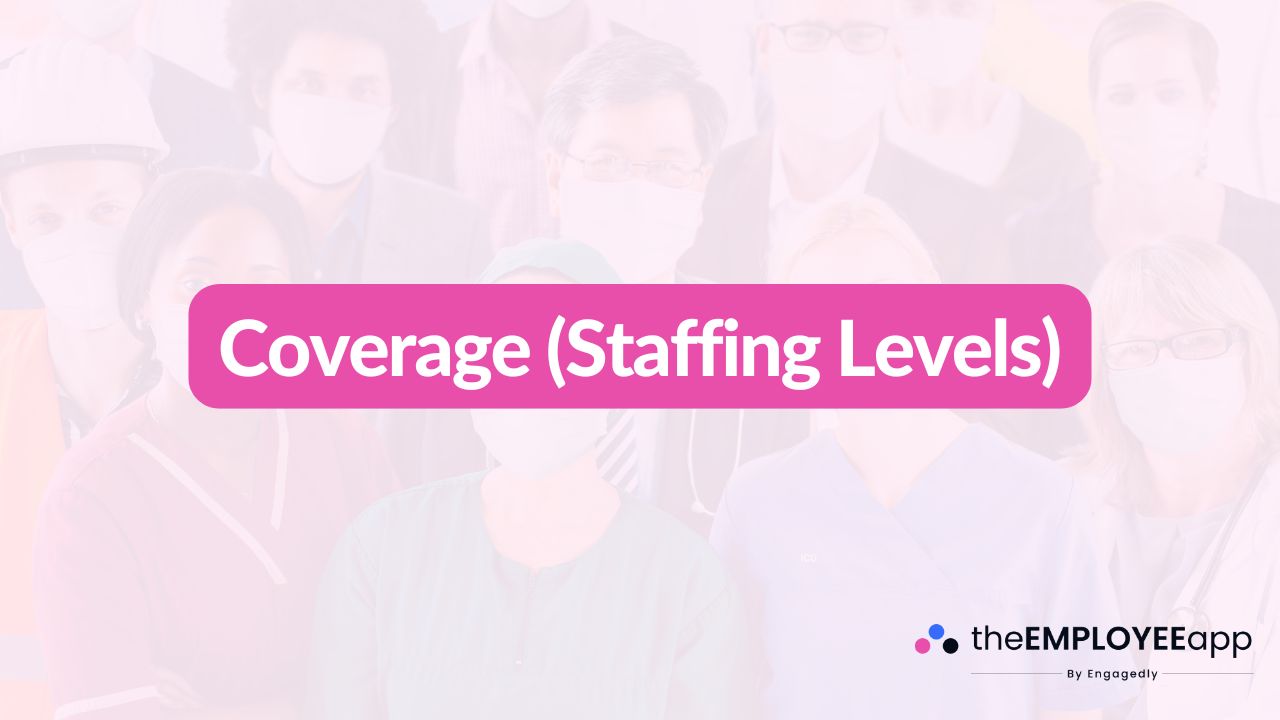
Coverage, in the context of operations and staffing, refers to the number of employees scheduled to work during a specific time period to meet business demands. It ensures that adequate personnel are available to maintain service levels, productivity, and operational safety. Proper coverage means having the right number of staff, with the right skills, at the right times to handle expected workload without overstaffing or understaffing.
In essence, coverage is about ensuring sufficient capacity throughout business hours. Whether it’s retail peak hours, manufacturing shifts, or customer support queues, coverage directly affects both performance and customer experience.
Maintaining optimal staffing coverage is critical for several reasons:
Ensures consistent service quality, preventing long wait times or dropped interactions.
Supports employee well-being by balancing workloads and avoiding burnout.
Optimizes labor costs, ensuring budgets align with actual needs.
Enhances operational resilience, offering flexibility during absences or spikes in demand.
Improves customer satisfaction, which can drive loyalty and revenue.
In 2025, with hybrid schedules, fluctuating demand, and real-time staffing needs, coverage remains a key driver of efficiency and worker engagement.
Effectively managing coverage involves the following steps:
Demand Analysis
Identify patterns in customer activity, production output, or service volume—daily, weekly, and seasonally.
Staffing Needs Assessment
Determine how many team members and which roles are required to meet demand peaks and valleys.
Shift Design
Craft shifts that align staffing with demand curves while honoring break rules, skill requirements, and fairness.
Flex Pool & Contingency
Build in buffer staff—floaters, part-timers, or on-call employees—to cover unexpected absences or surges.
Regular Review & Adjustment
Continuously monitor performance metrics and staffing feedback. Adjust schedules as needed to maintain optimal coverage.
Businesses that manage coverage effectively typically follow these best practices:
Use data-driven tools
Workforce management platforms with analytics help predict demand and suggest staffing levels accurately.
Promote cross-training
Equip staff with multiple skills to handle varying tasks—this enables flexible shift assignments without service gaps.
Communicate proactively
Share coverage needs and schedule changes early to give staff time to plan, improving morale and reducing turnover.
Build flexible staffing models
Incorporate part-time, temporary, and float staff to adapt quickly to fluctuations in demand.
Track performance
Measure metrics like customer wait times, coverage gaps, and overtime to assess plan effectiveness and drive continuous improvement.
When coverage is planned well, organizations see clear benefits:
Reduced operational disruptions, ensuring smooth day-to-day execution.
Improved employee satisfaction, as balanced loads and clear expectations reduce stress.
Cost control, through minimized reliance on overtime or last-minute hires.
Better customer outcomes, because adequate staffing leads to faster service and fewer errors.
Greater agility, responding rapidly when demand shifts or unexpected events occur.
Lack of adequate staffing coverage can result in:
Long queues, missed deadlines, or dropped service cases.
Employee burnout, absenteeism, and turnover.
Unplanned overtime, increasing labor costs.
Lower morale and reduced team effectiveness.
Reduced customer satisfaction and negative reviews.
Coverage, or staffing levels, is at the core of operational stability and efficiency. By aligning workforce availability with business demand—using data, flexibility, and proactive planning—organizations can reduce costs, improve service, and support their employees’ well-being. As work environments continue evolving, mastering coverage will remain a critical capability for businesses aiming to thrive in 2025 and beyond.
